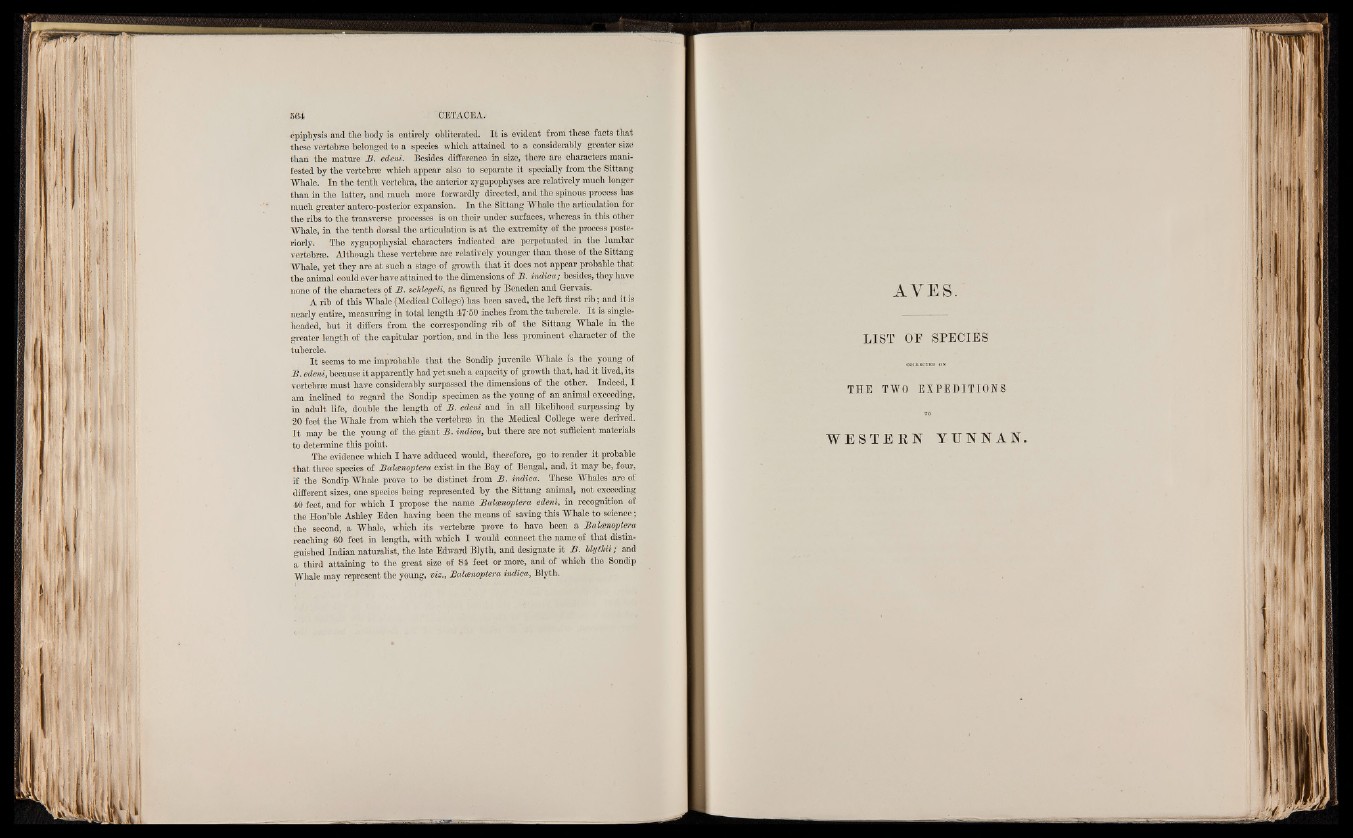
epiphysis and the body is entirely obliterated. I t is evident from these facts that
these vertebrae belonged to a species which attained to a considerably greater size
than the mature B. edeni. Besides difference in size, there are characters manifested
by the vertebrae which appear also to separate it specially from the Sittang
Whale. In the tenth vertebra, the anterior zygapophyses are relatively much longer
than in the latter, and much more forwardly directed, and the spinous process has
much greater antero-posterior expansion. In the Sittang Whale the articulation for
the ribs to the transverse processes is on their under surfaces, whereas in this other
Whale, in the tenth dorsal the articulation is at the extremity of the process posteriorly'.
The zygapophysiai characters indicated are perpetuated in the lumbar
vertebra. Although these vertebra are relatively younger than those of the Sittang
Whale, yet they are at such a stage of growth that it does not appear probable that
the a.nimfl.1 could ever have attained to the dimensions of B. indica; besides, they have
none of the characters of B. schlegeli, as figured by Beneden and Gervais.
A rib of this Whale (Medical College) has been saved, the left first rib; and it is
nearly entire, measuring in total length 47’50 inches from the tubercle. I t is singleheaded,
but it differs from the corresponding rib of the Sittang Whale in the
greater length of the capitular portion, and in the less prominent character of the
tubercle.
I t seems to me improbable that the Sondip juvenile Whale is the young of
B. edeni, because it apparently had yet such a capacity of growth that, had it lived, its
vertebra must have considerably surpassed the dimensions of the other. Indeed, I
am inclined to regard the Sondip specimen as the young of an animal exceeding,
in adult life, double the length of B. edeni and in all likelihood surpassing by
20 feet the Whale from which the vertebra in the Medical College were derived.
I t may be the young of the giant B . indica, but there are not sufficient materials
to determine this point.
The evidence which I have adduced would, therefore, go to render it probable
that three species of Balcenoptera exist in the Bay of Bengal, and, it may be, four,
if the Sondip Whale prove to be distinct from B . indica. These Whales are of
different sizes, one species being represented by the Sittang animalj not exceeding
40 feet, and for which I propose the name Balcenoptera edeni, in recognition of
the Hon’ble Ashley Eden having been the means of saving this Whale to science;
the second, a Whale, which its vertebra prove to have been a Balcenoptera
reaching 60 feet in length, with which I would connect the name of that distinguished
Indian naturalist, the late Edward Blyth, and designate it B. blythii; and
a third attaining to the great size of 84 feet or more, and of which the Sondip
Whale may represent the young, viz., Balcenoptera indica, Blyth.
A Y E S .
LIST OF SPECIES
THE TWO EX P E D I T I O N S
WE S TERN YUNNAN.